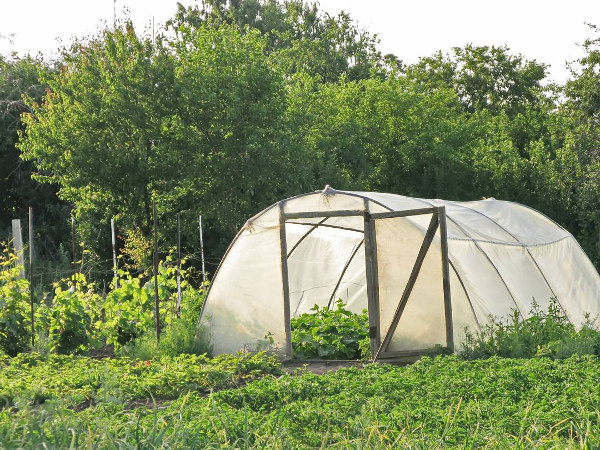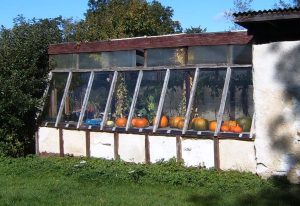We usually don’t think about our tunnel or greenhouse in November. There is very little need for it especially if you have planted the winter salads and overwintering garlic cloves and onion sets in October. There is much less need for watering and also the weeds have slowed down. Nevertheless the most important job is ventilation. Any chance you get you should open the doors.
Sowing in the polytunnel
Direct sowing into beds

I rarely sow crops at this time of year. The reason is that I just want to have a break but it is possible to sow early carrots and early peas now. They will germinate and remain quite small throughout December and January and then start to grow quickly. Some gardeners sow broad beans in their tunnel or greenhouse in November. I tried it a couple of times but I always preferred the outdoor crop that was planted at the same time.
Planting into beds
You can still plant garlic cloves directly into the beds. They will be ready in June.

Sowing into modules/pots (18-20°C)
If you still haven’t sown your winter salads you can still sow them now, but they may only start to crop in early spring.
- Claytonia (or Winter Purslane) – 5 seeds per cell
- Chervil, Coriander, Dill – 5 seeds per cell each
- Oriental brassica salads (all types) – 5 seeds per cell
- Spinach (annual) – 4 seeds per cell

Harvesting from the polytunnel
In November all your summer crops are coming to an end with a possible exception of tomatoes that can go on forever in a mild winter.
You may still harvest some:
Calabrese, coriander, corn salad, dill, Florence fennel, lettuce, oriental brassica salads, pak choi, parsley, radish, salads, scallions, spinach, tomatoes and turnip.

General polytunnel maintenance
- Hardly water at all – once a week at the most. Only water in the morning.
- Ventilate as much as possible. The tunnel and greenhouse doors should be opened during the day (weather permitting) and closed at night.
- Clear plants that have finished cropping.
- Harvest and weed your winter salads properly.
- Start preparing the soil for the early spring crops by incorporating compost or composted manure into the soil.
Thanks to John Harrison of Allotment & Gardens
You can get John’s book Vegetable Growing Month-by-Month here.


